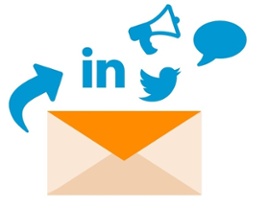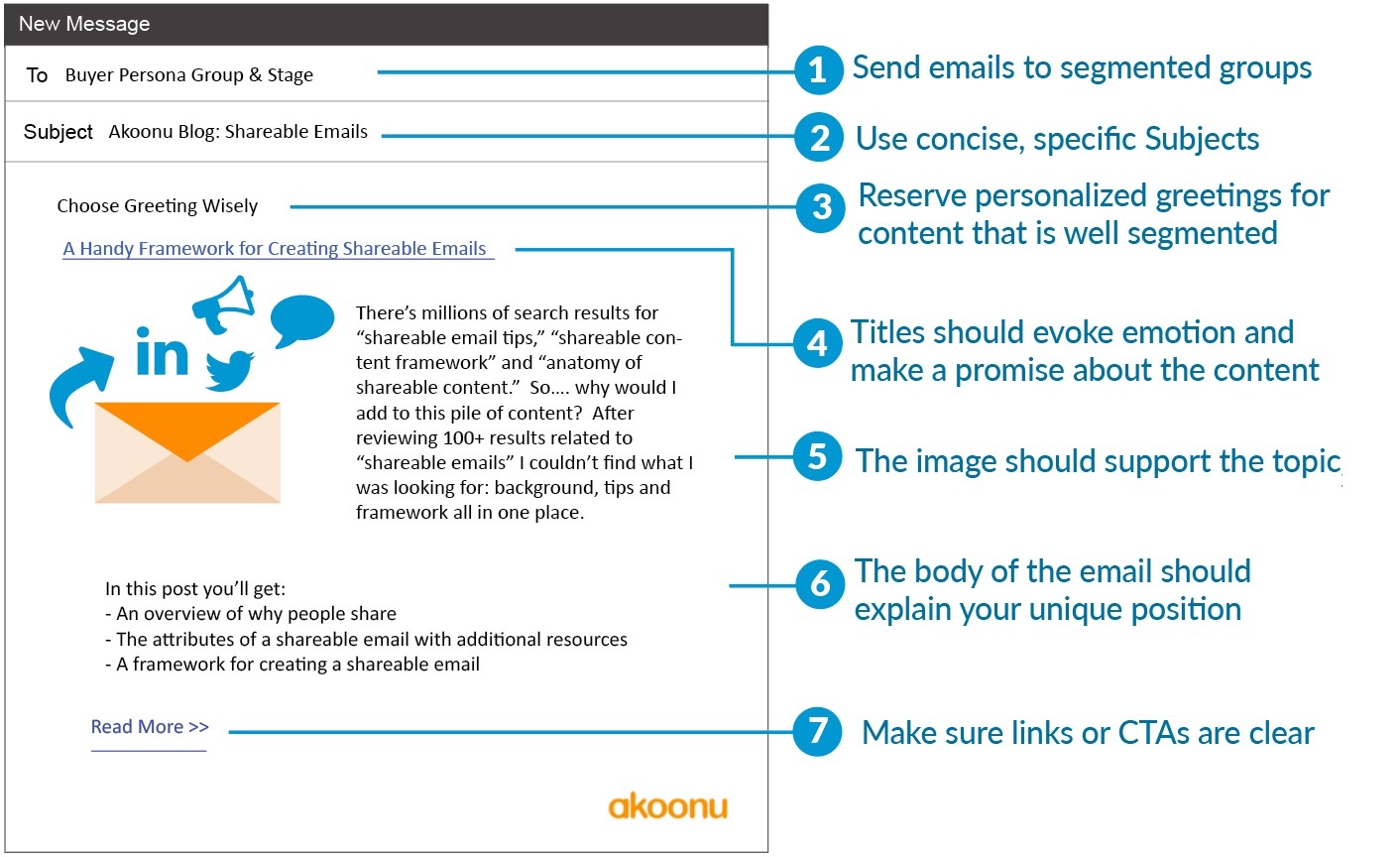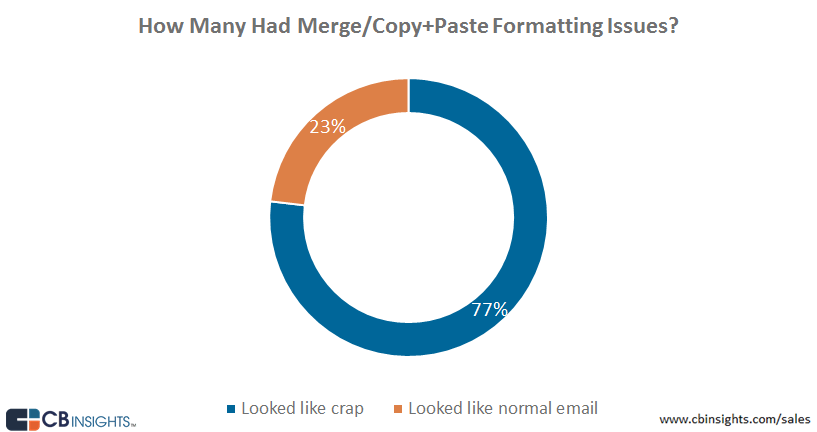 There’s millions of search results for “shareable email tips,” “shareable content framework,” and “anatomy of shareable content.” So…. why would I add to this pile of content? After reviewing 100+ results related to “shareable emails,” I couldn’t find what I was looking for: background, tips and framework all in one place.
There’s millions of search results for “shareable email tips,” “shareable content framework,” and “anatomy of shareable content.” So…. why would I add to this pile of content? After reviewing 100+ results related to “shareable emails,” I couldn’t find what I was looking for: background, tips and framework all in one place.
In this post you’ll get:
- An overview of why people share
- The attributes of a shareable email with additional resources
- A framework for creating the email
The Sharing Mindset
People share content for a variety of reasons that can be boiled down to three core groups. Jayson DeMers explains these categories in detail on The Psychology Of Shareable Content on Forbes.
1. Utility. People share content that makes something easier or better for them. These might include tips & tricks or how-to guides. Utility emails are helpful at any stage of the Buyers Journey, but need to be tailored to your audience groups at the right time to be effective.
2. Entertainment. It’s the least likely type to be part of your B2B content strategy, but content that simply amuses people frequently gets attention.
3. Inspiration. If you can find a way to intrigue someone, they may use your email or content offer as a way to start a dialogue with another person they think is interested in their ideas. Inspiration has a strong place in B2B marketing in the Awareness and Discovering stages of the Buyers Journey.
3 Attributes of a Share-Worthy Email
1. It is Relevant. To be relevant, emails need to be targeted to specific groups. Using Buyer Personas to segment your contacts is an excellent way to keep content topical and interesting. You can take this approach up a notch by further segmenting your contacts by where they are in their Buyers Journey. Sending relevant content at the right time for your audience is the best way to make emails resonate.
A prevalent pitfall: poorly managing the formatting of your merge fields in segmented, dynamic content. If you’re going to use a template with key areas filled in by merge, it’s critical to check your emails on multiple platforms and devices. CBInsights recently analyzed 147 emails and found that 77% had formatting issues with merge fields.
2. It Needs to be Differentiated. It’s not enough to be topically relevant, you need to share a unique perspective. If your potential buyer receives relevant content emails about the same offer from 10 different companies, what’s going to set you apart? Clear, helpful and thought-provoking content is needed.
The most common pitfall: being too similar. It’s hard to be unique, but if you take the time to read what’s already out there on your topic, you can create a differentiated perspective. Don’t be shy—announce your perspective with authority. It will help your readers sift through the noise. If you don’t have a unique perspective, consider another topic or angle.
3. It’s Designed to be Shareable. Put yourself in your buyer’s shoes. How would you want to share your content? Buyers like when you make it easy for them to do what they want with the content. Making content shareable includes a few simple best practices:
- Include sharing tools
- Hyperlink useful items
- It’s important to develop on-brand emails, but don’t be overly promotional or so heavily branded that it distracts from the content.
A Shareable Email Framework

1. Recipients: Send emails to segmented groups by Buyer Persona and Journey Stage, and use personalization where possible.
- Kissmetrics has a great article on email personalization
- We have many thorough resources on Buyer Personas. Here’s our most popular content all in one place
- Venturebeat created this useful chart on the types of data points that can be used for email personalization
2. Subject Lines. 35% of your readers choose whether to open your email based on the subject line alone. Checkout these best practices for email subject lines by MailChimp.
3. Greetings. Personalization with merge fields can be a great way to connect with your audience, but should be reserved for when:
- Your recipient list has clean data
- Your recipient signed up for or is expecting the content
- You’ve made sure the style and formatting are aligned with the post
4. Content Title. Choosing the best title is an art form, but there’s a formula for types that typically work well. See the chart below from BuzzSumo and their article for more detailed analysis on 5 Ways to Create Amazing Viral Headlines.
5. Relevant Images. Images should support the promise of the topic. Ideally, they should also be unique. If you don’t have deisgn skills or a deisgner, you can easily use someting like Canva to create imagery.
6. The Body. The body of the email should be concise, but also clearly explain the promise of your content.
7. Calls to Action. Regardless of the purpose of your email, it should be easy to understand what you’ll get if you click on the call to action.




